Saeid K. Dehkordi
From OTFS to DD-ISAC: Integrating Sensing and Communications in the Delay Doppler Domain
Nov 26, 2023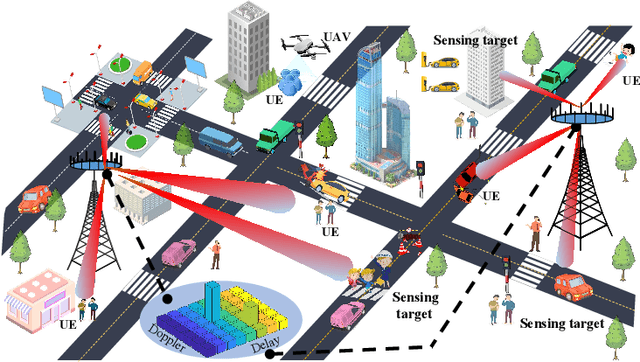

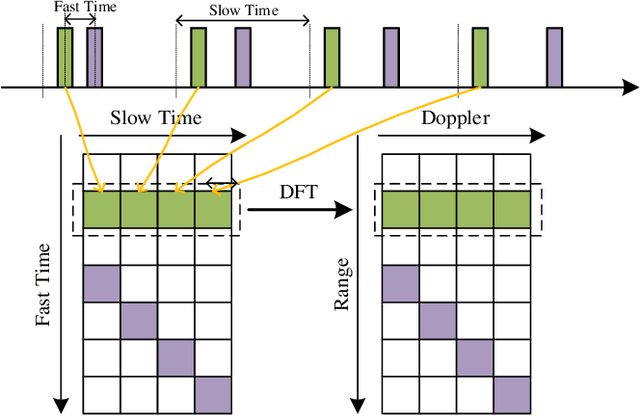

Abstract:Next-generation vehicular networks are expected to provide the capability of robust environmental sensing in addition to reliable communications to meet intelligence requirements. A promising solution is the integrated sensing and communication (ISAC) technology, which performs both functionalities using the same spectrum and hardware resources. Most existing works on ISAC consider the Orthogonal Frequency Division Multiplexing (OFDM) waveform. Nevertheless, vehicle motion introduces Doppler shift, which breaks the subcarrier orthogonality and leads to performance degradation. The recently proposed Orthogonal Time Frequency Space (OTFS) modulation, which exploits various advantages of Delay Doppler (DD) channels, has been shown to support reliable communication in high-mobility scenarios. Moreover, the DD waveform can directly interact with radar sensing parameters, which are actually delay and Doppler shifts. This paper investigates the advantages of applying the DD communication waveform to ISAC. Specifically, we first provide a comprehensive overview of implementing DD communications, based on which several advantages of DD-ISAC over OFDM-based ISAC are revealed, including transceiver designs and the ambiguity function. Furthermore, a detailed performance comparison are presented, where the target detection probability and the mean squared error (MSE) performance are also studied. Finally, some challenges and opportunities of DD-ISAC are also provided.
Multi-static Parameter Estimation in the Near/Far Field Beam Space for Integrated Sensing and Communication Applications
Sep 26, 2023



Abstract:This work proposes a maximum likelihood (ML)-based parameter estimation framework for a millimeter wave (mmWave) integrated sensing and communication (ISAC) system in a multi-static configuration using energy-efficient hybrid digital-analog arrays. Due to the typically large arrays deployed in the higher frequency bands to mitigate isotropic path loss, such arrays may operate in the near-field regime. The proposed parameter estimation in this work consists of a two-stage estimation process, where the first stage is based on far-field assumptions, and is used to obtain a first estimate of the target parameters. In cases where the target is determined to be in the near-field of the arrays, a second estimation based on near-field assumptions is carried out to obtain more accurate estimates. In particular, we select beamfocusing array weights designed to achieve a constant gain over an extended spatial region and re-estimate the target parameters at the receivers. We evaluate the effectiveness of the proposed framework in numerous scenarios through numerical simulations and demonstrate the impact of the custom-designed flat-gain beamfocusing codewords in increasing the communication performance of the system.
Extended Target Parameter Estimation and Tracking with an HDA Setup for ISAC Applications
Aug 16, 2023Abstract:We investigate radar parameter estimation and beam tracking with a hybrid digital-analog (HDA) architecture in a multi-block measurement framework using an extended target model. In the considered setup, the backscattered data signal is utilized to predict the user position in the next time slots. Specifically, a simplified maximum likelihood framework is adopted for parameter estimation, based on which a simple tracking scheme is also developed. Furthermore, the proposed framework supports adaptive transmitter beamwidth selection, whose effects on the communication performance are also studied. Finally, we verify the effectiveness of the proposed framework via numerical simulations over complex motion patterns that emulate a realistic integrated sensing and communication (ISAC) scenario.
Integrated Sensing and Communication with MOCZ Waveform
Jul 04, 2023Abstract:In this work, we propose a waveform based on Modulation on Conjugate-reciprocal Zeros (MOCZ) originally proposed for short-packet communications in [1], as a new Integrated Sensing and Communication (ISAC) waveform. Having previously established the key advantages of MOCZ for noncoherent and sporadic communication, here we leverage the optimal auto-correlation property of Binary MOCZ (BMOCZ) for sensing applications. Due to this property, which eliminates the need for separate communication and radar-centric waveforms, we propose a new frame structure for ISAC, where pilot sequences and preambles become obsolete and are completely removed from the frame. As a result, the data rate can be significantly improved. Aimed at (hardware-) cost-effective radar-sensing applications, we consider a Hybrid Digital-Analog (HDA) beamforming architecture for data transmission and radar sensing. We demonstrate via extensive simulations, that a communication data rate, significantly higher than existing standards can be achieved, while simultaneously achieving sensing performance comparable to state-of-the-art sensing systems.
Beam Alignment with an Intelligent Reflecting Surface for Integrated Sensing and Communication
Apr 04, 2023Abstract:In a typical communication system, in order to maintain a desired SNR level, initial beam alignment (BA) must be established prior to data transmission. In a setup where a Base Station (BS) Tx sends data via a digitally modulated waveform, we propose a User Equipment (UE) enhanced with a Hybrid Intelligent Reflecting Surface (HIRS) to aid beam alignment. A novel multi-slot estimation scheme is developed that alleviates the restrictions imposed by the Hybrid Digital-Analog (HDA) architecture of the HIRS and the BS. To demonstrate the effectiveness of the proposed BA scheme, we derive the CRLB of the parameter estimation scheme and provide numerical results.
A Beam-Space Active Sensing Scheme for Integrated Communication and Sensing Applications
Oct 09, 2022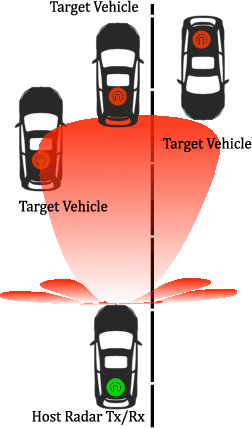
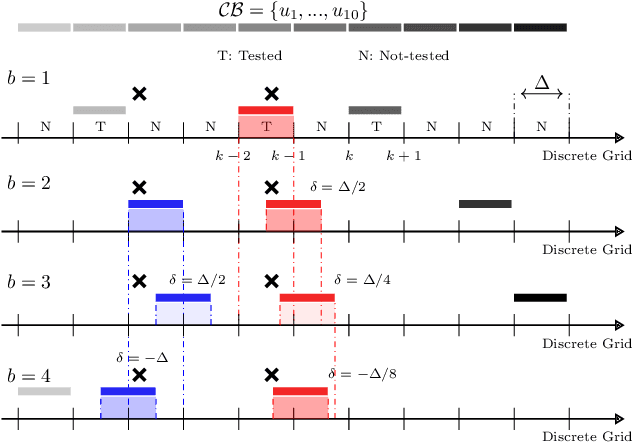
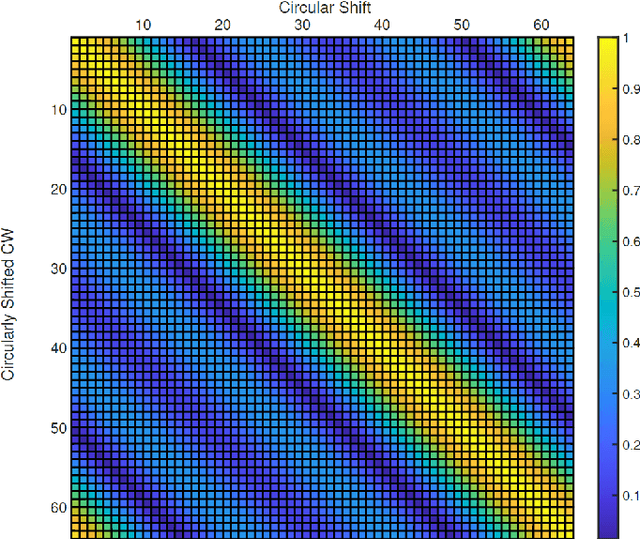
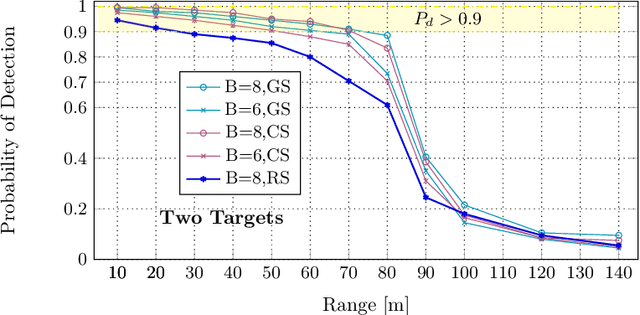
Abstract:In this paper, we develop an active sensing strategy for a millimeter wave (mmWave) band Integrated Sensing and Communication (ISAC) system adopting a realistic hybrid digital-analog (HDA) architecture. To maintain a desired SNR level, initial beam acquisition (BA) must be established prior to data transmission. In the considered setup, a Base Station (BS) Tx transmits data via a digitally modulated waveform and a co-located radar receiver simultaneously performs radar estimation from the backscattered signal. In this BA scheme, a single common data stream is broadcast over a wide angular sector such that the radar receiver can detect the presence of not yet acquired users and perform coarse parameter estimation (angle of arrival, time of flight, and Doppler). As a result of the HDA architecture, we consider the design of multi-block adaptive RF-domain 'reduction matrices' (from antennas to RF chains) at the radar receiver, to achieve a compromise between the exploration capability in the angular domain and the directivity of the beamforming patterns. Our numerical results demonstrate that the proposed approach is able to reliably detect multiple targets while significantly reducing the initial acquisition time.
Beam-Space MIMO Radar for Joint Communication and Sensing with OTFS Modulation
Jul 12, 2022



Abstract:Motivated by automotive applications, we consider joint radar sensing and data communication for a system operating at millimeter wave (mmWave) frequency bands, where a Base Station (BS) is equipped with a co-located radar receiver and sends data using the Orthogonal Time Frequency Space (OTFS) modulation format. We consider two distinct modes of operation. In Discovery mode, a single common data stream is broadcast over a wide angular sector. The radar receiver must detect the presence of not yet acquired targets and perform coarse estimation of their parameters (angle of arrival, range, and velocity). In Tracking mode, the BS transmits multiple individual data streams to already acquired users via beamforming, while the radar receiver performs accurate estimation of the aforementioned parameters. Due to hardware complexity and power consumption constraints, we consider a hybrid digital-analog architecture where the number of RF chains and A/D converters is significantly smaller than the number of antenna array elements. In this case, a direct application of the conventional MIMO radar approach is not possible. Consequently, we advocate a beam-space approach where the vector observation at the radar receiver is obtained through a RF-domain beamforming matrix operating the dimensionality reduction from antennas to RF chains. Under this setup, we propose a likelihood function-based scheme to perform joint target detection and parameter estimation in Discovery, and high-resolution parameter estimation in Tracking mode, respectively. Our numerical results demonstrate that the proposed approach is able to reliably detect multiple targets while closely approaching the Cramer-Rao Lower Bound (CRLB) of the corresponding parameter estimation problem.
Simultaneous Communication and Tracking in Arbitrary Trajectories via Beam-Space Processing
Mar 29, 2022

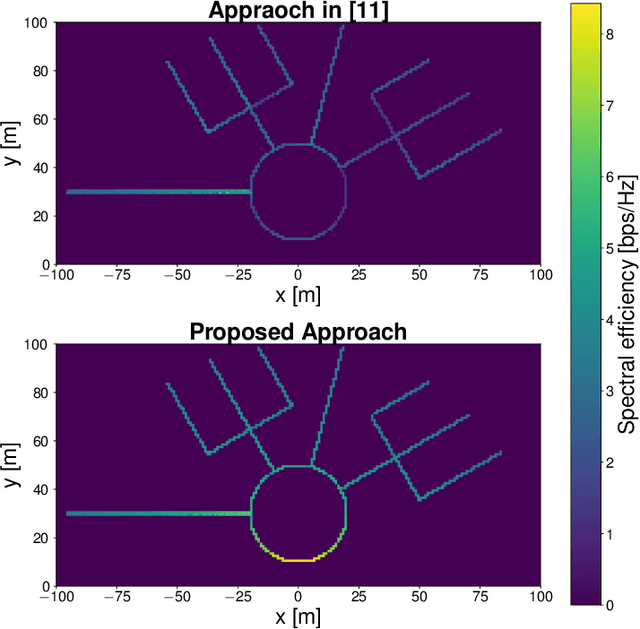
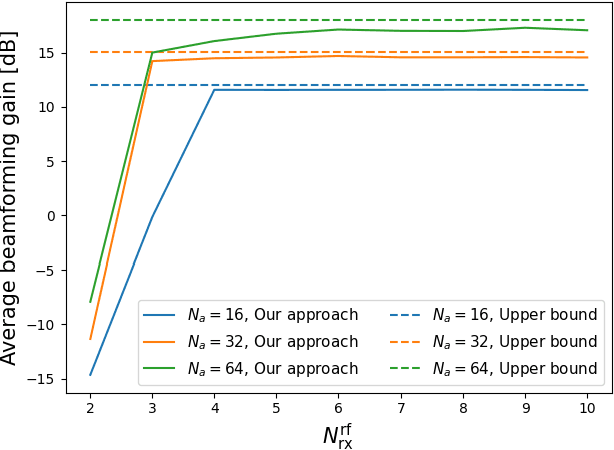
Abstract:In this paper, we develop a beam tracking scheme for an orthogonal frequency division multiplexing (OFDM) Integrated Sensing and Communication (ISAC) system with a hybrid digital analog (HDA) architecture operating in the millimeter wave (mmWave) band. Our tracking method consists of an estimation step inspired by radar signal processing techniques, and a prediction step based on simple kinematic equations. The hybrid architecture exploits the predicted state information to focus only on the directions of interest, trading off beamforming gain, hardware complexity and multistream processing capabilities. Our extensive simulations in arbitrary trajectories show that the proposed method can outperform state of the art beam tracking methods in terms of prediction accuracy and consequently achievable communication rate, and is fully capable of dealing with highly non-linear dynamic motion patterns.
 Add to Chrome
Add to Chrome Add to Firefox
Add to Firefox Add to Edge
Add to Edge